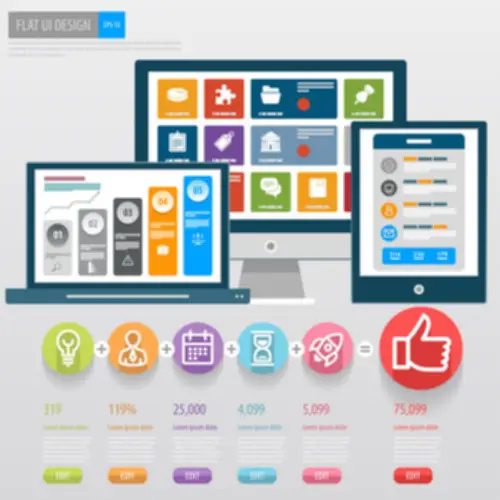Deep learning methods prove very good at text classification, achieving state-of-the-art results on a suite of standard
academic benchmark problems. Conneau, A., Khandelwal, K., Goyal, N., Chaudhary, V., Wenzek, G., Guzmán, F., et al. (2020). “Unsupervised cross-lingual representation learning at scale,” in Proceedings of the 58th Annual Meeting of the Association for Computational Linguistics (Online), 8440–8451. Debiasing word embeddings,” in 30th Conference on Neural Information Processing Systems (NIPS 2016) (Barcelona). The authors declare that the research was conducted in the absence of any commercial or financial relationships that could be construed as a potential conflict of interest. Connect and share knowledge within a single location that is structured and easy to search.
How AI And Machine Learning Are Changing Business Travel Expense Reporting – Tycoonstory Media
How AI And Machine Learning Are Changing Business Travel Expense Reporting.
Posted: Mon, 12 Jun 2023 04:38:52 GMT [source]
This can be challenging for businesses that don’t have the resources or expertise to stay up to date with the latest developments in NLP. The IT service provider offers custom software development for industry-specific projects. Our proven processes securely and quickly deliver accurate data and are designed to scale and change with your needs.
Sure, here are some additional important points and recommended reference books for NLP:
It’s important to know where subjects
start and end, what prepositions are being used for transitions between sentences, how verbs impact nouns and other
syntactic functions to parse syntax successfully. Syntax parsing is a critical preparatory task in sentiment analysis
and other natural language processing features as it helps uncover the meaning and intent. In addition, it helps
determine how all concepts in a sentence fit together and identify the relationship between them (i.e., who did what to
whom). Tasks like named entity recognition (briefly described in Section 2) or relation extraction (automatically identifying relations between given entities) are central to these applications. For example, while humanitarian datasets with rich historical data are often hard to find, reports often include the kind of information needed to populate structured datasets.
It also needs to consider other sentence specifics, like that not every period ends a sentence (e.g., like
the period in “Dr.”). There are other, smaller-scale initiatives that can contribute to creating and consolidating an active and diverse humanitarian NLP community. Compiling and sharing lists of educational resources that introduce NLP experts to the humanitarian world—and, vice versa, resources that introduce humanitarians to the basics of NLP—would be a highly valuable contribution. Similarly, sharing ideas on concrete projects and applications of NLP technology in the humanitarian space (e.g., in the form of short articles) could also be an effective way to identify concrete opportunities and foster technical progress.
3. Using data for assessment and response
Thus, semantic analysis is the study of the relationship between various linguistic utterances and their meanings, but pragmatic analysis is the study of context which influences our understanding of linguistic expressions. Pragmatic analysis helps users to uncover the intended meaning of the text by applying contextual background knowledge. NLP involves a variety of techniques, including computational linguistics, machine learning, and statistical modeling. These techniques are used to analyze, understand, and manipulate human language data, including text, speech, and other forms of communication. While NLP systems achieve impressive performance on a wide range of tasks, there are important limitations to bear in mind.
What is the most challenging task in NLP?
Understanding different meanings of the same word
One of the most important and challenging tasks in the entire NLP process is to train a machine to derive the actual meaning of words, especially when the same word can have multiple meanings within a single document.
If we feed enough data and train a model properly, it can distinguish and try categorizing various parts of speech(noun, verb, adjective, supporter, etc…) based on previously fed data and experiences. If it encounters a new word it tried making the nearest guess which can be embarrassingly wrong few times. As you see over here, parsing English with a computer is going to be complicated.
Chapter 3: Challenges in Arabic Natural Language Processing
However, if you’ve ever read a doctor’s note, you’ll find that the standard rules of english grammar don’t really apply. The correct use of punctuation is pretty much left to chance and tenses are repeatedly misused. Adding to this problem are international healthcare professionals who don’t have english as their first language.
- Changing one word in a sentence in many cases would completely change the meaning.
- Earlier language-based models examine the text in either of one direction which is used for sentence generation by predicting the next word whereas the BERT model examines the text in both directions simultaneously for better language understanding.
- Natural language processing models tackle these nuances, transforming recorded voice and written text into data a machine can make sense of.
- The lexicon was created using MeSH (Medical Subject Headings), Dorland’s Illustrated Medical Dictionary and general English Dictionaries.
- There are massive modern medical materials and new medical methods and approaches are developing rapidly.
- In practices equipped with teletriage, patients enter symptoms into an app and get guidance on whether they should seek help.
NLP has its roots in the 1950s when researchers first started exploring ways to automate language translation. The development of early computer programs like ELIZA and SHRDLU in the 1960s marked the beginning of NLP research. These early programs used simple rules and pattern recognition techniques to simulate conversational interactions with users. Startups planning to design and develop chatbots, voice assistants, and other interactive metadialog.com tools need to rely on NLP services and solutions to develop the machines with accurate language and intent deciphering capabilities. The aim of this paper is to describe our work on the project “Greek into Arabic”, in which we faced some problems of ambiguity inherent to the Arabic language. Difficulties arose in the various stages of automatic processing of the Arabic version of Plotinus, the text which lies at the core of our project.
Challenges of natural language processing
Another approach is text classification, which identifies subjects, intents, or sentiments of words, clauses, and sentences. This technological advance has profound significance in many applications, such as automated customer service and sentiment analysis for sales, marketing, and brand reputation management. We use closure properties to compare the richness of the vocabulary in clinical narrative text to biomedical publications. We approach both disorder NER and normalization using machine learning methodologies. Our NER methodology is based on linear-chain conditional random fields with a rich feature approach, and we introduce several improvements to enhance the lexical knowledge of the NER system. Our normalization method – never previously applied to clinical data – uses pairwise learning to rank to automatically learn term variation directly from the training data.
NLP is becoming increasingly popular due to the growth of digital data, and it has numerous applications in different fields such as business, healthcare, education, and entertainment. This article provides an overview of natural language processing, including its history, techniques, applications, and challenges. One big challenge for natural language processing is that it’s not always perfect; sometimes, the complexity inherent in
human languages can cause inaccuracies and lead machines astray when trying to understand our words and sentences. Data
generated from conversations, declarations, or even tweets are examples of unstructured data.
Is natural language processing part of machine learning?
The goal of NLP is to create software that understands language as well as we do. Natural language processing (NLP) is a branch of artificial intelligence (AI) that assists in the process of programming computers/computer software to ‘learn’ human languages. It’s no coincidence that we can now communicate with computers using human language – they were trained that way – and in this article, we’re going to find out how. We’ll begin by looking at a definition and the history behind natural language processing before moving on to the different types and techniques. Significant cutting-edge research and technological innovations will emerge from the fields of speech and natural language processing. Some of the main applications of NLP include language translation, speech recognition, sentiment analysis, text classification, and information retrieval.
- Even though evolved grammar correction tools are good enough to weed out sentence-specific mistakes, the training data needs to be error-free to facilitate accurate development in the first place.
- Nowadays NLP is in the talks because of various applications and recent developments although in the late 1940s the term wasn’t even in existence.
- Natural language processing has a wide range of applications in business, from customer service to data analysis.
- This is particularly important for analysing sentiment, where accurate analysis enables service agents to prioritise which dissatisfied customers to help first or which customers to extend promotional offers to.
- Major use of neural networks in NLP is observed for word embedding where words are represented in the form of vectors.
- These alignment sets refine the alignments formed from Giza++ produced as a result of EM training algorithm.
Developing labeled datasets to train and benchmark models on domain-specific supervised tasks is also an essential next step. Expertise from humanitarian practitioners and awareness of potential high-impact real-world application scenarios will be key to designing tasks with high practical value. There is increasing emphasis on developing models that can dynamically predict fluctuations in humanitarian needs, and simulate the impact of potential interventions.
3. Explainability, bias, and ethics of humanitarian data
There are particular words in the document that refer to specific entities or real-world objects like location, people, organizations etc. To find the words which have a unique context and are more informative, noun phrases are considered in the text documents. Named entity recognition (NER) is a technique to recognize and separate the named entities and group them under predefined classes.
- An HMM is a system where a shifting takes place between several states, generating feasible output symbols with each switch.
- Sources feeding into needs assessments can range from qualitative interviews with affected populations to remote sensing data or aerial footage.
- The year 2020, was defined by uncertainty and the global pandemic, witnessed increased investment into innovation and AI adoption, and has brought the future forward by 5 years, evidently at the forefront across business units (Muehmel, 2020).
- In the recent past, models dealing with Visual Commonsense Reasoning [31] and NLP have also been getting attention of the several researchers and seems a promising and challenging area to work upon.
- Sentiment or emotive analysis uses both natural language processing and machine learning to decode and analyze human emotions within subjective data such as news articles and influencer tweets.
- At later stage the LSP-MLP has been adapted for French [10, 72, 94, 113], and finally, a proper NLP system called RECIT [9, 11, 17, 106] has been developed using a method called Proximity Processing [88].
Today, because so many large structured datasets—including open-source datasets—exist, automated data labeling is a viable, if not essential, part of the machine learning model training process. Another challenge for natural language processing/ machine learning is that machine learning is not fully-proof or 100 percent dependable. Automated data processing always incurs a possibility of errors occurring, and the variability of results is required to be factored into key decision-making scenarios. The training and development of new machine learning systems can be time-consuming, and therefore expensive. If a new machine learning model is required to be commissioned without employing a pre-trained prior version, it may take many weeks before a minimum satisfactory level of performance is achieved.
What are the challenges of learning language explain?
Learning a foreign language is one of the hardest things a brain can do. What makes a foreign language so difficult is the effort we have to make to transfer between linguistically complex structures. It's also challenging to learn how to think in another language. Above all, it takes time, hard work, and dedication.







